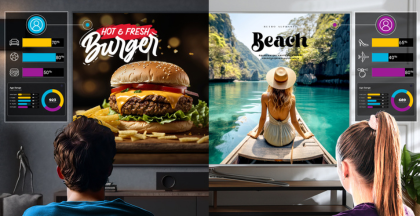More and more broadcasters and content owners are moving their playout workflows to the public cloud. A recent survey of over 200 media and entertainment executives show that 30 percent of them have considered migrating to cloud playout for broadcast. The main reasons driving this decision include scalability, better end-user experience, the willingness to upgrade technology, shorter time to market of services and cost reduction.
This blog examines how broadcasters can move their playout workflows to the cloud, explaining why playout-to-delivery workflows are cost efficient.
You have options when moving playout to the cloud
Traditionally, on-premises playout systems operate as independent platforms managed by a dedicated engineering team. These systems connect downstream to the encoding and delivery platform, which encodes the playout outputs. Increasingly, a single encoding platform is being used to handle both broadcast and streaming delivery, as this approach is more efficient and cost-effective. Often, the encoding and delivery platform is operated by a different engineering team than the one overseeing the playout platform.
This split between playout and encoding/delivery is justified because they rely on different technologies, hardware, skill sets and teams within an organization.
You might have several questions while considering moving playout to the cloud. For instance, does it make sense to replicate the same architecture? Or, should you re-engineer your playout workflow to take full advantage of the public cloud?
First, you need to uplink your live signals and files in the public cloud for cloud playout to process them. Downlinking the playout outputs to the ground to perform the encoding and delivery on-premises is cost prohibitive. Instead, running encoding and delivery in the public cloud is the optimal solution.
Keeping the playout system in the cloud separate from the encoding and delivery system is an option. But it comes with significant cost. To connect the two silos (playout and encoding/delivery), as shown in Figure 1, you will need to encode the playout outputs using a mezzanine format. This will enable you to transport them to the encoding platform in the cloud that will then decode them before re-encoding efficiently for broadcast and OTT delivery.
Figure 1 – Two silos for playout and encoding/delivery in the cloud
To avoid mezzanine encoding and decoding and the associated cloud compute costs, you can bundle playout, encoding and delivery in a single system. This is where playout-to-delivery comes in play.
What is a playout-to-delivery solution?
A playout-to-delivery solution combines a wide range of functionalities in a single software platform. This includes:
- advanced playout capabilities controlled via API or an external automation system
- sophisticated branding (e.g., DVE, text crawl, HTML5 graphics, multiple layers)
- premium compression
- the latest packaging and origin for OTT delivery
- statistical multiplexing and data insertion for broadcast delivery.
Harmonic’s XOS Advanced Media Processor and VOS®360 Media SaaS solutions both support playout-to-delivery. Advanced playout, premium encoding and delivery for a given channel run on the same node as cloud-native microservices, avoiding any specific transport and mezzanine encoding and decoding between playout and encoding, saving resources.
Unlock the benefits of playout-to-delivery
Adopting a playout-to-delivery workflow unlocks a host of benefits, from cost savings to greater efficiency and streamlined operations.
We compared the silo-based approach vs. the playout-to-delivery approach cost-wise, assuming 10 HD 24x7 linear channels are originated in the cloud, branded using at least two graphics layers and delivered directly to consumers using DASH and HLS streaming protocols. All channels were encoded in MPEG-4 AVC using PURE compression and EyeQ, Harmonic’s AI-enabled technology to save 40% CDN costs. Under this scenario, playout-to-delivery reduces your cloud costs by almost half, independently of the cloud provider.
Another benefit of playout to delivery is simplified configuration, monitoring, upgrades and management of 24x7 channels. With a unified UI, API and operations team, you can seamlessly configure and spin up and down pop-up channels. When Harmonic deploys its playout-to-delivery solution, we ensure the uptime of your linear channels, which is ultimately what matters most for you and your viewers.
Embrace the Cloud
Moving to the cloud gives broadcasters the opportunity to re-engineer their playout workflows. Playout-to-delivery helps to reduce cloud costs and streamline operations. Leading broadcasters globally like RTL Germany and Globo have already adopted this approach. Some broadcasters are also considering using playout-to-delivery for on-premises deployments.
Contact us to discover how Harmonic’s playout-to-delivery solutions can optimize costs and simplify your video distribution.









